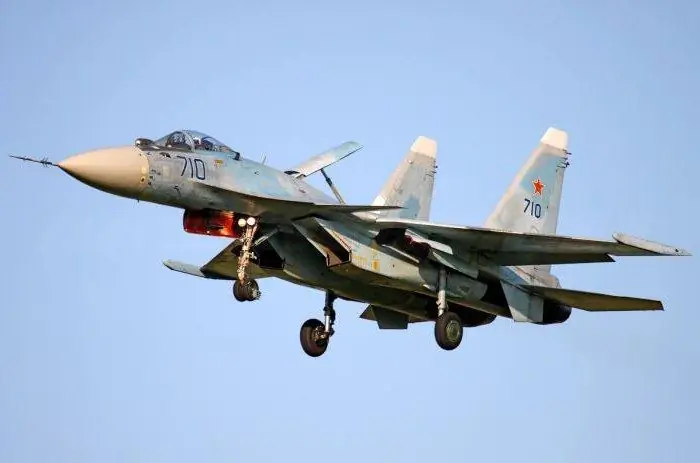2025 Author: Howard Calhoun | [email protected]. Last modified: 2025-06-01 07:12:56
The basis of air movement on the principles of aerodynamics is the presence of a force that counteracts air resistance in flight and gravity. All modern aircraft, with the exception of gliders, have an engine whose power is converted into this force. The mechanism that converts the rotation of the shaft of the power plant into thrust is the aircraft propeller.

Propeller Description
Aircraft propeller is a mechanical device with blades that is rotated by an engine shaft and creates thrust for the movement of the aircraft in the air. By tilting the blades, the propeller throws air back, creating an area of low pressure in front of it and high pressure behind it. Almost all people on earth at least once in their lives had the opportunity to see this device, so numerous scientific definitions are not required. The propeller consists of blades, a hub connected to the engine through a special flange, balancing weights placed on the hub, a mechanism for changing the pitch of the propeller and a fairing covering the hub.

Other names
What is another name for an airplane propeller? Historically, there were two main names: the actual propeller and the propeller. However, later other names appeared, emphasizing either design features or additional functions assigned to this unit. Specifically:
- Fenestron. A screw inserted into a special channel in the tail of a helicopter.
- Impeller. A screw enclosed in a special ring.
- Propfan. These are arrow-shaped, or saber-shaped screws in two rows with a reduced diameter.
- Windfan. Emergency backup power supply system from the oncoming air flow.
- Rotor. This is sometimes called the main rotor of a helicopter and some others.

Propeller theory
At its core, any aircraft propeller is a kind of movable wings in miniature, living according to the same laws of aerodynamics as the wing. That is, moving in the atmospheric environment, the blades, due to their profile and inclination, create an air flow, which is the driving force of the aircraft. The strength of this flow, in addition to the specific profile, depends on the diameter and speed of the propeller. At the same time, the dependence of thrust on revolutions is quadratic, and on diameter - even to the 4th degree. The general thrust formula is as follows: P=αρn2D4where:
- α - propeller thrust coefficient (depends on the design and profile of the blades);
- ρ - air density;
- n - number of revolutionsscrews;
- D is the screw diameter.
It is interesting to compare with the above formula, another one derived from the same screw theory. This is the required power to ensure rotation: T=Βρn3D5, where Β is the calculated power factor of the propeller.
Comparing these two formulas, it can be seen that by increasing the speed of the aircraft propeller and increasing the diameter of the propeller, the required engine power grows exponentially. If the thrust level is proportional to the square of the revolutions and the 4th power of the diameter, then the required engine power increases already in proportion to the cube of the revolutions and the 5th power of the propeller diameter. As engine power increases, so does its weight, which requires even more thrust. Another vicious circle in the aircraft industry.

Propeller specifications
Any propeller installed on an aircraft has the following characteristics:
- Screw diameter.
- Geometric move (step). This term refers to the distance that the screw would travel, crashing into a theoretical solid surface in one revolution.
- Tread - the actual distance traveled by the propeller in one revolution. Obviously, this value depends on the speed and on the frequency of rotation.
- Blade angle - the angle between the plane and the actual pitch of the propeller.
- Blade Shape - Most modern blades are saber-shaped, curved.
- Blade profile - the cross section of each blade has, as a rule, a wing shape.
- Mean blade chord -geometric distance between leading and trailing edges.
At the same time, the main characteristic of an aircraft propeller is its thrust, that is, what it is needed for.

Dignity
Aircraft that use a propeller as a propeller are much more economical than their turbojet counterparts. The efficiency reaches 86%, which is an unattainable value for jet aircraft. This is their main advantage, which actually put them back into operation during the oil crisis of the 70s of the last century. At short distances, speed is not critical compared to economy, so most regional aviation aircraft are propeller-driven.

Flaws
Propeller aircraft also have disadvantages. First of all, these are purely “kinetic” cons. During rotation, the propeller of the aircraft, having its own mass, has an effect on the body of the aircraft. If the blades, for example, rotate clockwise, then the housing tends to rotate, respectively, counterclockwise. The turbulences created by the propeller actively interact with the wings and empennage of the aircraft, creating different flows to the right and left, thereby destabilizing the flight path.
Finally, the rotating propeller is a kind of gyroscope, that is, it tends to maintain its position, which makes it difficult to change the flight path for aircourt. These shortcomings of the aircraft propeller have been known for a long time, and designers have learned to deal with them by introducing a certain asymmetry in the design of the ships themselves or their control surfaces (rudders, spoilers, etc.). In fairness, it should be noted that jet engines also have similar "kinetic" shortcomings, but to a somewhat lesser extent.
The so-called locking effect can also be attributed to the minuses, when an increase in the diameter and rotational speed of the aircraft propeller to certain limits ceases to produce an effect in the form of an increase in thrust. This effect is associated with the appearance in certain sections of the blades of air flows of near- or supersonic speed, which creates a wave crisis, that is, the formation of air shocks. In fact, they overcome the sound frontier. In this regard, the maximum speed of aircraft with a propeller does not exceed 650-700 km/h.
Perhaps the only exception was the Tu-95 bomber, which reaches speeds of up to 950 km/h, that is, almost sonic speed. Each of its engines is equipped with two coaxial propellers rotating in opposite directions. Well, the last problem of propeller-driven aircraft is their noise, the requirements for which are constantly tightened by the aviation authorities.

Classification
There are many ways to classify aircraft propellers. They are divided into groups depending on the material from which they are made, on the shape of the blades, their diameter, quantity, as well as a number of others.characteristics. However, the most important is their classification according to two criteria:
- First - there are variable-pitch and fixed-pitch propellers.
- Second - there are pulling and pushing screws.
The first is installed in the front of the aircraft, and the second, respectively, in the rear. An aircraft with a pusher propeller arose earlier, but then it was forgotten for some time and only relatively recently reappeared in the sky. Now this layout is widely used on small aircraft. There are even quite exotic options, equipped with both pulling and pushing blades at the same time. An aircraft with a propeller at the rear has a number of advantages, chief among which is its higher aerodynamic quality. However, due to the lack of additional airflow from the propeller, the wing has the worst takeoff and landing characteristics.

Variable Pitch Screws
Variable pitch propellers are installed on almost all modern medium and large aircraft. With a large blade pitch, a lot of thrust is achieved, but if the engine speed is quite low, the acceleration will be extremely slow. This is very similar to the situation with a car when in higher gears trying to start.
High speed and small propeller pitch creates the danger of stalling and dropping thrust to zero. Therefore, during the flight, the pitch is constantly changing. Now this is done by automation, but before the pilot himself had to constantly monitor this manually.adjust the angle. The mechanism for changing the pitch of the propeller is a special bushing with a drive mechanism that rotates the blades relative to the axis of rotation by the required degree.

Modern development in Russia
Work on improving devices has never stopped. At present, tests are being carried out on a new propeller of the AV-112 aircraft. It will be used on the Il-112V light military transport aircraft. This is a 6-bladed propeller with an efficiency of 87%, a diameter of 3.9 meters and a rotation speed of 1200 rpm and a variable pitch propeller. A new blade profile has been developed and its design has been lightened.
Recommended:
PBU, expenses: types, classification, interpretation, name, symbol and rules for filling out financial documents

In 2000, the Regulations on Accounting, approved by the order of the Ministry of Finance dated 06.05.1999, - PBU 10/99 "Expenses of the organization", came into force. It was developed in pursuance of the state program for reforming the Russian accounting system in accordance with IFRS. In this article, we will deal with the features of the application of PBU 10/1999 "Organization's expenses"
Classes of the Nice Classification: codes, list and classifier. What is the International Classification of Goods and Services?

For the registration of each mark of new products in business, the International Classification of Goods and Services is used. At the initial stage, the applicant determines under which category his activity falls. In the future, this will be the basis for the implementation of registration procedures and determining the amount of the fee paid by the entrepreneur
Characteristics of the Su-35. Su-35 aircraft: specifications, photo of the fighter. Comparative characteristics of the Su-35 and F-22

In 2003, the Sukhoi Design Bureau began the second in line modernization of the Su-27 fighter to create the Su-35 aircraft. The characteristics achieved in the process of modernization make it possible to call it a 4++ generation fighter, which means that its capabilities are as close as possible to the PAK FA fifth generation aircraft
Anti-aircraft missile system. Anti-aircraft missile system "Igla". Anti-aircraft missile system "Osa"

The need to create specialized anti-aircraft missile systems was ripe during the Second World War, but scientists and gunsmiths from different countries began to approach the issue in detail only in the 50s. The fact is that until then there simply were no means of controlling interceptor missiles
Information flows in logistics are Concept and classification, characteristics and examples

Information logistics deals with the organization of data flows that accompany material values in the process of their movement. It allows you to link supply, production and sales. Information flows in logistics are a tool for managing the processes of movement and warehousing of products

